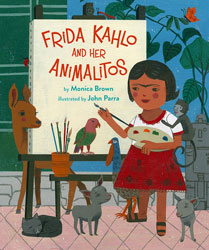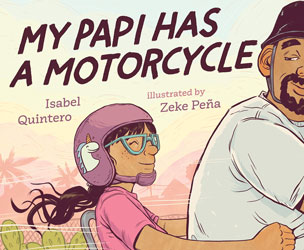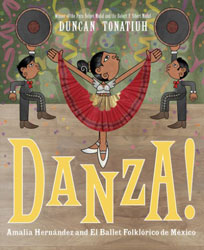Frida Kahlo and Her Animalitos
By Monica Brown, Illustrated by John Parra

Mexican artist Frida Kahlo famously observed that because she was alone so much and knew herself best, she chose to paint herself. However, she also depicted her lifelong pets—her animalitos—who inspired, comforted and supported her throughout, and this wonderful book celebrates them. Frida had two spider monkeys (Fulang Chang and Caimito de Guayabal), a boldly colored parrot (Bonito), three dogs (including a hairless Mexican ixquintle dog, Mr. Xoloti), an eagle named Gertrudis Caca Blanca (Gertrude White Shirt), two turkeys, a cat, and a fawn named Granizo. Frida shared much in common with her beloved pets, and even Frida’s bright‑blue home, La Casa Azul, was reminiscent of the color of her Bonito’s feathers. Her parents nurtured Frida’s curiousness for the world, even when she was struck with illness at a young age and then again at eighteen. She began to paint thanks to keen eyes, plenty of imagination and encouragement, and also the fun, loving companionship of the animalitos, who lived and played in the courtyard of La Casa Azul with her long after her marriage to Diego Rivera.
Monica Brown is the author of many children’s books, including the Lola Levine and Sarai chapter books, and picture book biographies of Tito Puente and Pablo Neruda. John Para is an award‑winning illustrator, designer, teacher and fine art painter, whose works are inspired by his Hispanic heritage, as well as by Mexican mural paintings and surrealism. Frida Kahlo and Her Animalitos was named a New York Times Best Illustrated Book of 2017 and 2018 Pura Belpré Honor for Illustration. (Ages 4‑8)
Check Availability





